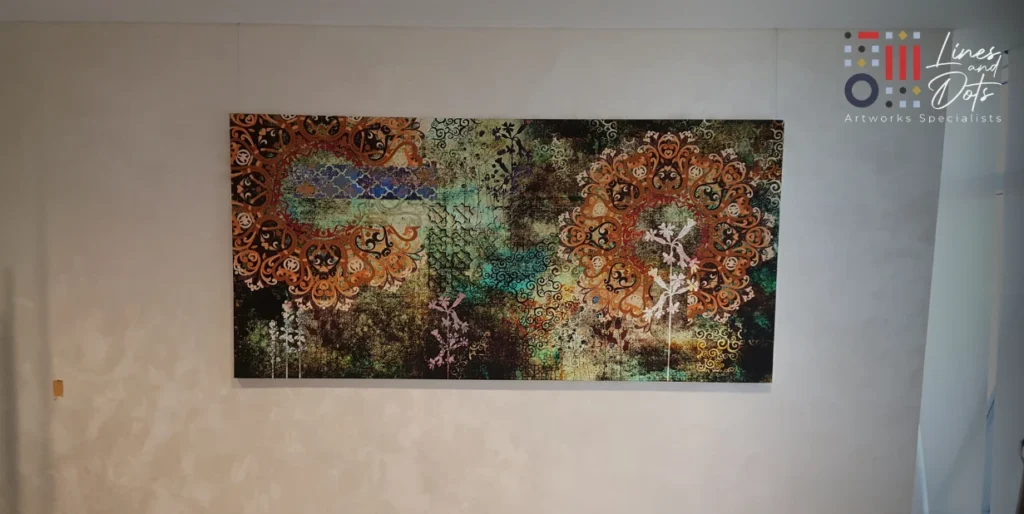In the world of digital painting, mastering color theory can transform your artwork from ordinary to extraordinary. Digital painting isn’t just a set of rules—it’s a foundation that helps artists understand how colors interact, evoke emotions, and bring their vision to life. For any aspiring or professional digital artist, this knowledge is indispensable.
What is Color Theory?
Color theory is the study of how colors interact and how they can be combined to create visually appealing designs. It provides a framework for understanding primary, secondary, and tertiary colors, as well as concepts like harmony, contrast, and saturation. In digital painting, this theory helps you make informed decisions to create impactful visuals.
The Basics of Color Theory
- The Color Wheel At the heart of color theory lies the color wheel, a circular arrangement of colors that illustrates relationships between them. The primary colors—red, blue, and yellow—are the building blocks of all other colors. Secondary colors, such as green, orange, and purple, are created by mixing primary colors. Tertiary colors arise from combining primary and secondary colors.
- Color Relationships
- Complementary Colors: These are opposite each other on the color wheel, like blue and orange. Using complementary colors can create strong contrast and vibrant visuals.
- Analogous Colors: Found next to each other on the color wheel, analogous colors—like blue, teal, and green—create harmony and are pleasing to the eye.
- Triadic Colors: This involves three colors evenly spaced on the color wheel, such as red, yellow, and blue. Triadic schemes bring balance and vibrancy to digital paintings.
- Warm and Cool Colors Warm colors like red, orange, and yellow evoke energy and passion, while cool colors like blue, green, and purple convey calmness and serenity. Understanding these categories can help set the mood for your artwork.
The Role of Color in Digital Painting
In digital painting, colors are more than just aesthetic choices. They serve to:
- Set the Mood: A soft pastel palette can create a dreamy atmosphere, while bold, vibrant hues convey excitement.
- Guide the Viewer’s Eye: Strategic color placement can draw attention to specific parts of your artwork.
- Create Depth and Dimension: Skillful use of shading, highlights, and gradients can add depth to flat surfaces.

Tools for Color Management in Digital Painting
Modern software provides a variety of tools to make color application easier. Here are a few examples:
- Color Pickers and Swatches Tools like the eyedropper and color swatches allow you to select precise shades and create a cohesive palette.
- Blend Modes Blend modes in programs like Adobe Photoshop or Procreate enable artists to overlay colors and achieve unique effects.
- Gradients and Gradients Maps These tools are excellent for creating seamless transitions between colors, adding depth and dimension to your work.
- Layer Adjustments Adjustments like hue, saturation, and brightness allow for fine-tuning your artwork’s color balance.
Practical Tips for Applying Color Theory
- Start with a Limited Palette Especially for beginners, using a limited palette can help you focus on color harmony and avoid overwhelming your canvas.
- Experiment with Color Schemes Try out different combinations—complementary, analogous, or triadic—to see what best fits your vision.
- Use References Observing nature, photographs, or other artwork can provide inspiration for color combinations and how they work in context.
- Consider Lighting Lighting dramatically affects how colors appear. Warm lighting can enhance yellows and reds, while cool lighting emphasizes blues and greens.
- Understand Saturation and Value Saturation refers to the intensity of a color, while value indicates its lightness or darkness. Together, they can create mood, focus, and visual hierarchy.
Common Mistakes and How to Avoid Them
- Over-Saturation While vibrant colors can make your work pop, too much saturation can overwhelm viewers. Balance bold hues with neutral tones.
- Ignoring Contrast Without sufficient contrast, elements of your painting may blend together. Use light and dark tones to create depth.
- Using Too Many Colors A cluttered palette can confuse the viewer and dilute your artwork’s impact. Stick to a cohesive scheme for clarity.
- Forgetting Color Temperature Mixing warm and cool colors inappropriately can create discord. Ensure your lighting and palette are consistent.
The Emotional Impact of Colors
Colors have the power to evoke emotions and tell stories. For instance:
- Red: Passion, energy, danger
- Blue: Calm, trust, sadness
- Yellow: Happiness, warmth, caution
- Green: Nature, balance, growth
- Purple: Royalty, mystery, creativity
Understanding these psychological associations can help you connect with your audience on a deeper level.
Enhancing Your Digital Painting Skills
To truly master color theory, practice is essential. Here are a few exercises:
- Create Color Studies Focus on small, quick sketches that explore different color schemes.
- Repaint Existing Art Take a previous work and apply a new color palette to understand its impact.
- Attend Workshops or Tutorials Online classes and tutorials can provide insights and hands-on experience with color theory.
- Seek Feedback Share your work with peers or mentors to get constructive feedback on your color choices.
Conclusion
Mastering color theory is a journey, not a destination. By understanding the principles of the color wheel, relationships, and emotional impact, you can elevate your digital painting to new heights. At Lines and Dots, we believe in empowering artists to unleash their creativity, and digital painting is a vital tool in achieving that goal. Dive into the world of colors, experiment, and watch your digital artwork come alive!
If you’re looking for expert advice, tools, or workshops to refine your skills, Lines and Dots is here to support you. Explore our resources and let us help you create artwork that truly stands out. Visit us at Lines and Dots and begin your journey towards artistic excellence today!
